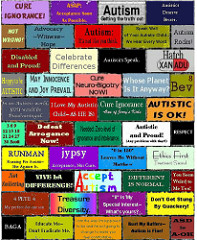While soaking my aching joints in a hot bath, it occurred to me that as an organism, I am not naturally suited for the environment where I am living. It’s below the freezing temperature outside, and I don’t hibernate or have enough fur or feathers to keep me warm, plus I would have extreme difficulty acquiring enough food to eat with just tooth and nail. Furthermore, human young are born at any season, and take years to rear. From a purely biological perspective, you would think that this hominid species would be limited to foraging family groups living in tropical areas. We are in high contrast to other intelligent, tool-using species that are well-adapted to their environments.
In biology, there are a lot of different means to achieve the same end. All living organisms need to acquire particular kinds of molecules and the energy to assemble them into useful materials so they can grow and reproduce, and also be able to get rid of the kinds of molecules they don’t need; if they reproduce sexually then they need to find another organism with compatible genetic material; and lastly they need to be able to fend off other organisms and to protect themselves from abiotic (environmental) forces that interfere with these activities. Organisms are “successful” by how well they adapt to the available ecological niches, or how well they can create or exploit new kinds of niches.
Cetaceans (whales, porpoises, dolphins) and proboscids (elephants) are nearly-furless, polyphagous mammalian species that are well-adapted to the ecological niches they inhabit (“polyphagous” means an animal eats a variety of foods, which increases the chances for successful foraging or hunting). They have relatively large brains for their body size, and are intelligent animals with long memories, good learning and problem-solving abilities, and forms of language. Hominids (chimpanzees, gorillas, orangutans) are furred polyphagous mammalian species that are well-adapted to the ecological niches they inhabit. Hominids also have relatively large brains for their body size, and are intelligent animals with long memories, good learning and problem-solving abilities, and forms of language.
Ecologists refer to such species as being “K-selected” or “K-strategists”, because the numbers of these animals will (under natural conditions) come close to the “K value”, the carrying capacity of the local environment. That means that the population numbers remain fairly high and stable, and this is reflected in the animals’ ability to live a long time and be able to care for a limited number of slow-maturing offspring. The intelligence, knowledge and learning ability, and forms of language contribute to that ability to rear those offspring, and to pass on knowledge in forms of culture.
In some contrast, the fourth hominid, the human, is a nearly-furless, polyphagous, invasive mammalian species that is poorly adapted for most of the ecological environments that it inhabits. Humans are also K-strategists, although being an invasive species with high adaptive abilities, sometimes exceeds the local carrying capacity of its environments. Because of this, humans have the ability to change local and world-wide environments to a far greater degree, and in a shorter period of time, than any other organism.
The only reason why the species is not limited to foraging bands living in tropical areas (the primæval “Eden”) is because we can create so many tools that compensate for our various deficiencies. We have been able to expand our niche beyond that which is biologically natural by taking tool-making far beyond the immediate-problem-solving level that other animals employ. Social insects such as termites, ants and bees create structures, farm fungus or herd aphid livestock, transform raw materials into honey, structural waxes and papers, but the individual species are still limited by their requirements for specific ecotones.
When the “naked ape” is disabled by not being naturally-adapted to its current environment, it responds by creating long-term tools. We create clothing and shelter to cope with colder temperature ranges. We manipulate food resources by herding, farming, hoarding, drying, fermenting, and freezing, and also by selecting, breeding and displacing species far from their natural places of origin. We create machineries of transport to move ourselves and our things. We create tools to compensate for limitations of sensory perception, to increase our ability to get information about our environments. We create tools for the greater memory/storage and dissemination of cultural information.
The human is a terrestrial anomaly because it actively seeks to put itself into disabling environments, and creates tools that will allow it to live and thrive in those environments. Orcas and other dolphins don’t create tools that will allow them to live on land, and elephants don’t make tools that will allow them to colonise temperate zones. Meanwhile, there are millions of individual humans who would not be able to physically survive in their natural environments, and I don’t just mean the “extremophiles” in low earth orbit or Antarctica. Easily 99% of the humans alive today rely upon the accommodations of farmed food, shelter and clothing, plus things like corrective lenses, hearing aids, wheels, and health-maintaining pharmaceuticals.
There’s a reason why we have different connotations for the words “nude” and “naked”. A human is only nude when they feel safe and protected from the world. But a naked human hominid, stripped of its clothing and other tools, is fairly defenceless, and not easily a successful organism in most environments.
One of the benefits to being able to modify environments according to needs is that humans are able to create so many more niches. We can create different personal environments by using different materials to perform different jobs. We can compensate for different abilities in ways that other animals cannot, and thus succeed individually. Our ability to make long-term tools and create micro-environments for ourselves allows us to be successful to live out our natural lifespans, to rear children and care for each other at different life stages.
Given that humans must compensate for so many natural disabilities, it’s surprising that we will go out of our way to create additional disabilities for ourselves, those handicaps that are created by the social environments. The idea that people should be “independent” and not need things to enable us to function is wholly absurd. We all need other people and things to learn and to function; it’s the specifics that sometimes differ. These are artificial barriers to successful living, not natural barriers.
The human being as a species is simultaneously the most disabled and yet the most successful organism on the planet. We need to remember that, especially when we seek to pretend that disabled people are not “normal” people. Specific disabilities may not be average, but being disabled is inherently normal. You can’t get much more inherently disabled than being a naked ape outside of “Eden”.








abfh said,
19 February 2007 at 15:29
It is indeed ironic that, in an age when we have so many more technological adaptations and so many niches for people of all sorts in various environments, there’s still a widespread view that certain kinds of human differences are abnormal.
If some apes developed a genetic variation that caused them to have less ability to adapt to a particular environment than other apes (which would mean that they were better adapted for other conditions), we wouldn’t be calling them defective and claiming that they should be eradicated for the good of the species. Instead, conservationists would be working to study the variant group, to determine what sort of habitat they thrived in, and to preserve such habitat. When it comes to apes and other wildlife, we understand that the more diversity, the better. But many folks don’t seem to be able to apply this reasoning to our own species…
laurentius-rex said,
18 February 2007 at 2:37
The only reason we have two different words “nude” and “naked” is because English is an eclectic and accretive language with multiple redundancy. It is a purely linguistic phenomenon which those with a historical penchant for false etymology wish to distinguish with seperate meaning.
The number of times I have seen people try and distinguish nude “francophone” and naked “germanic” reminds me of all that idiocy about HFA vs AS it is historical accident no more.
In France one word suffices “nu” in German one word “nakt” so any other construction is nought but a bare faced lie :)
Oh the vagueries of the anglophile word thinkers.
mcewen said,
17 February 2007 at 23:54
Indeed, but it’s only as normal people bimble about trashing the world that we live in, that we need people who have different neurological pathways to help us all find different solutions – but I won’t get on my environmental soapbox for the moment.
Hope the bath helped.